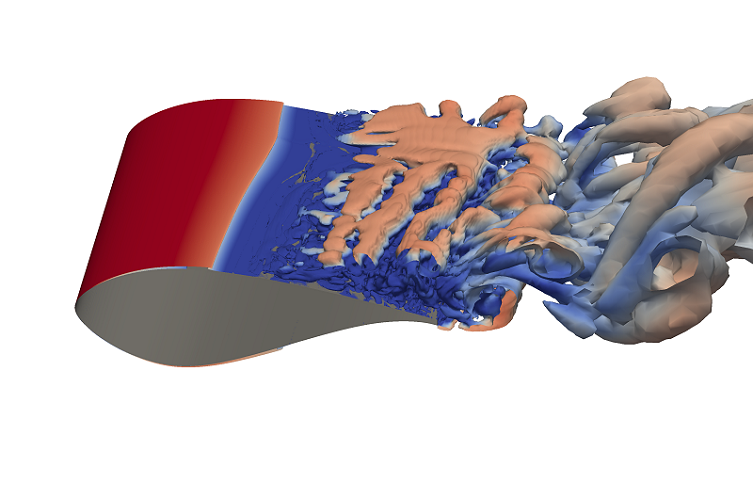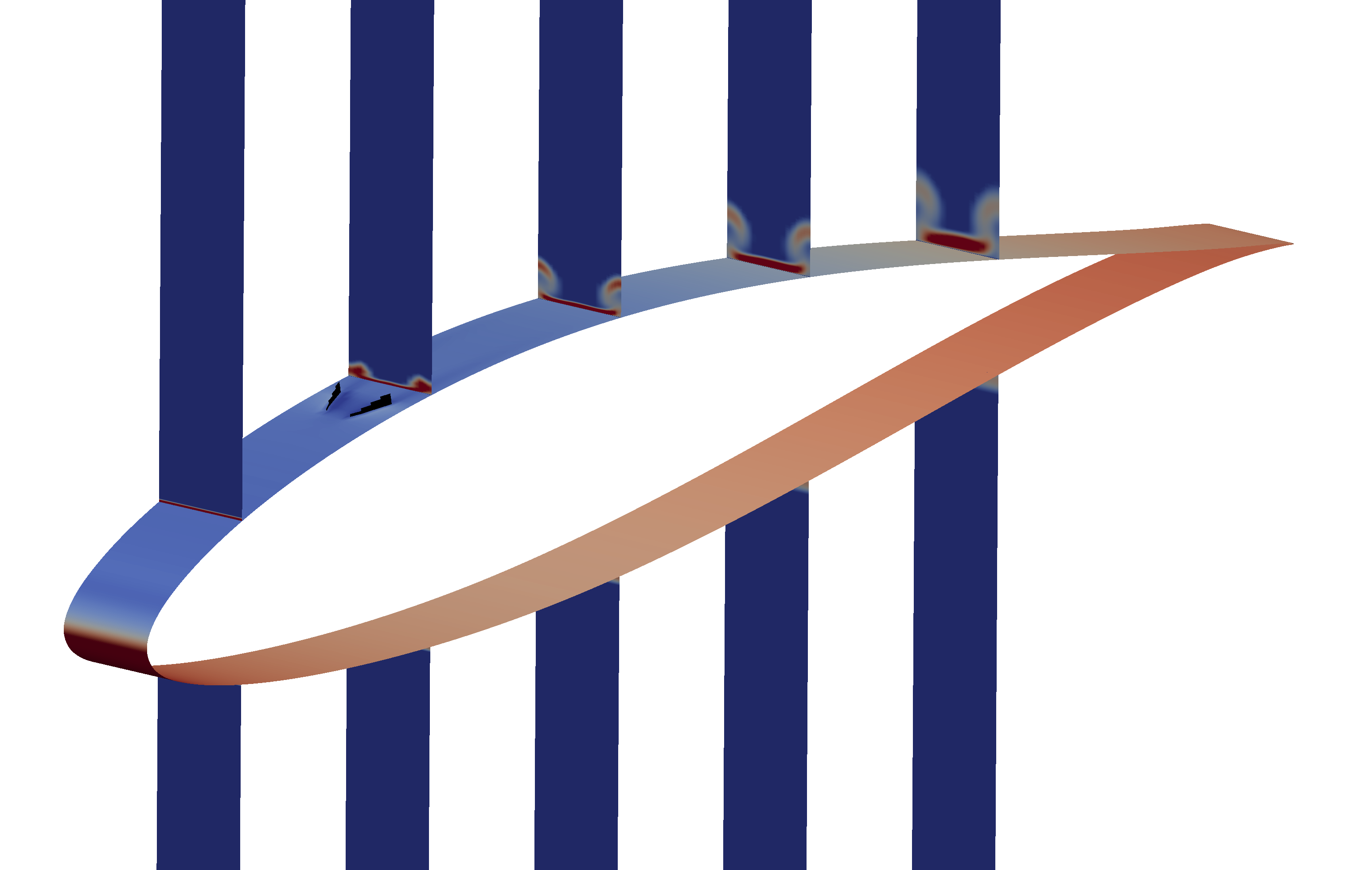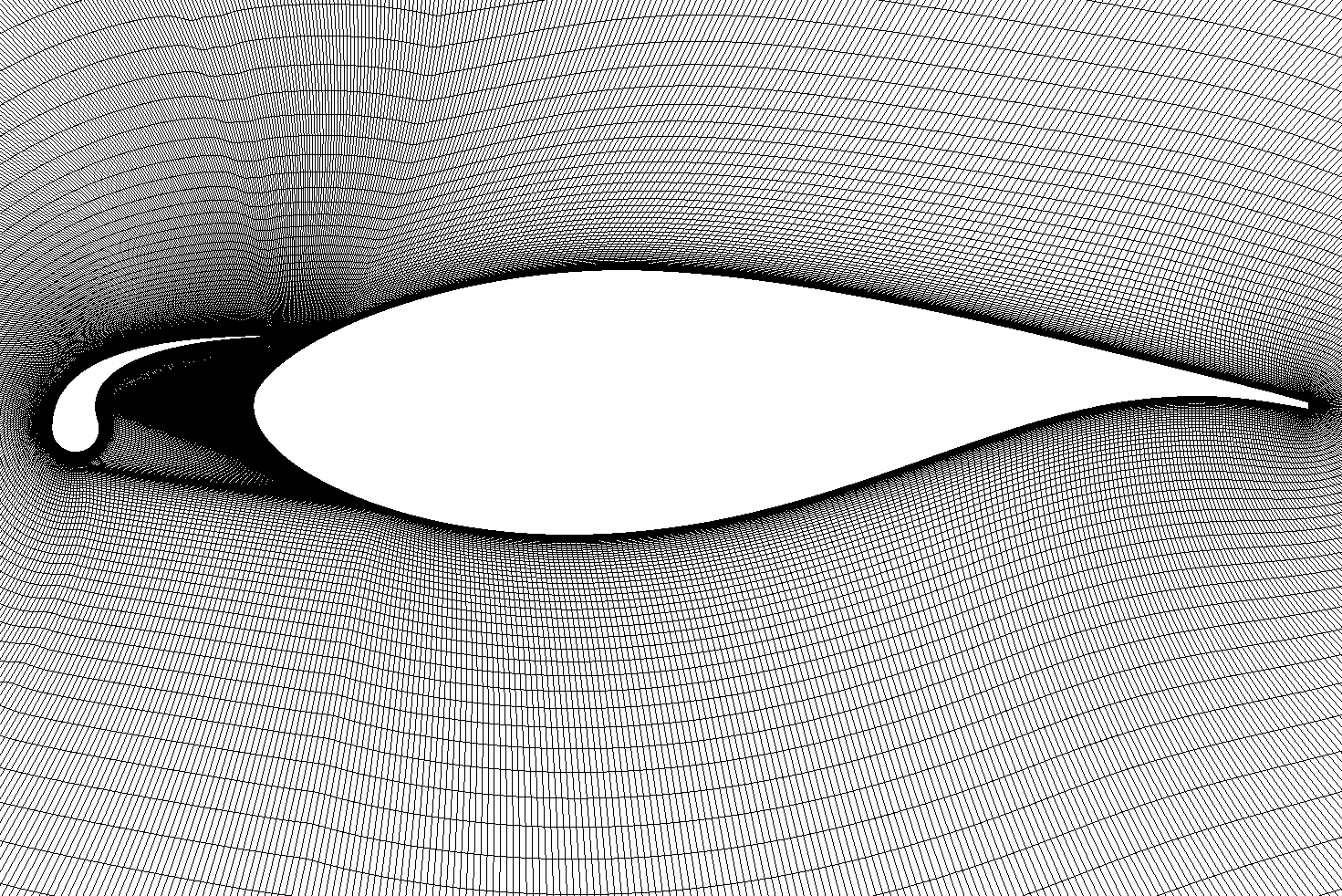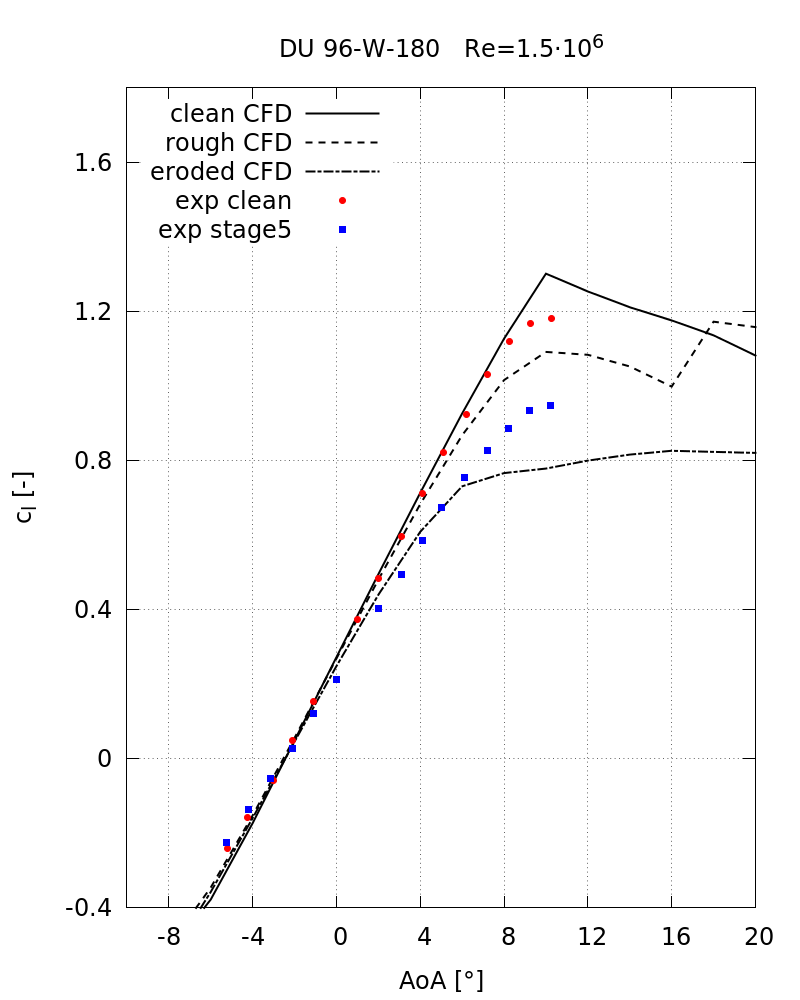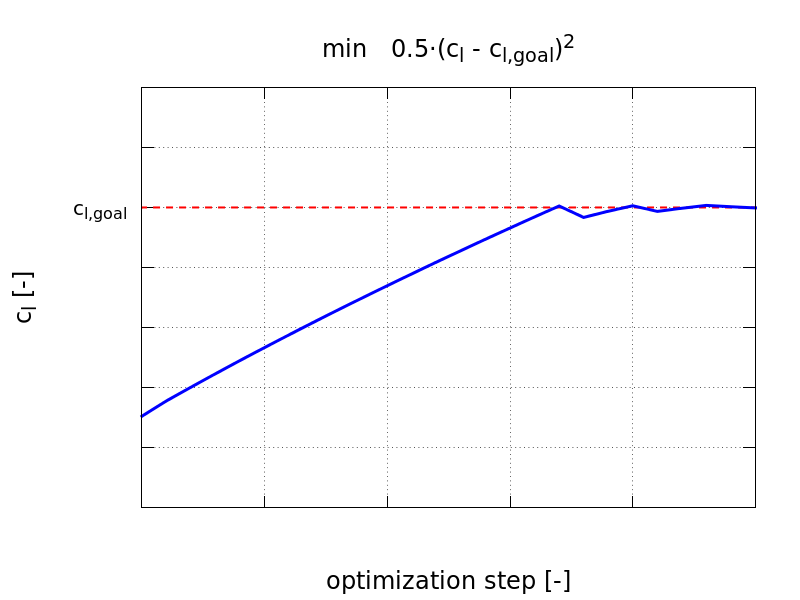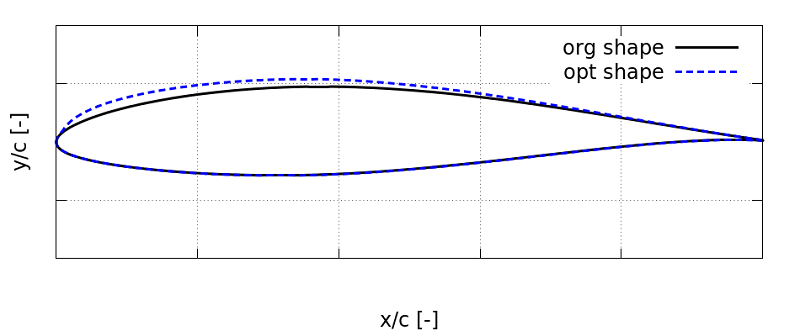Steady-state computations based on RANS (Reynolds-Averaged Navier-Stokes) are the common approach for computing airfoil polars. The workflow at Fraunhofer IWES is fully automated and the turbulence models are optimized for good force prediction, including stall and at high Reynolds numbers. Transition models are also available. Please find hereafter a few images to illustrate these methods. Furthermore, an example case for airfoil simulations can be found on Fraunhofer Gitlab webpage.
Airfoil Simulations and Optimization

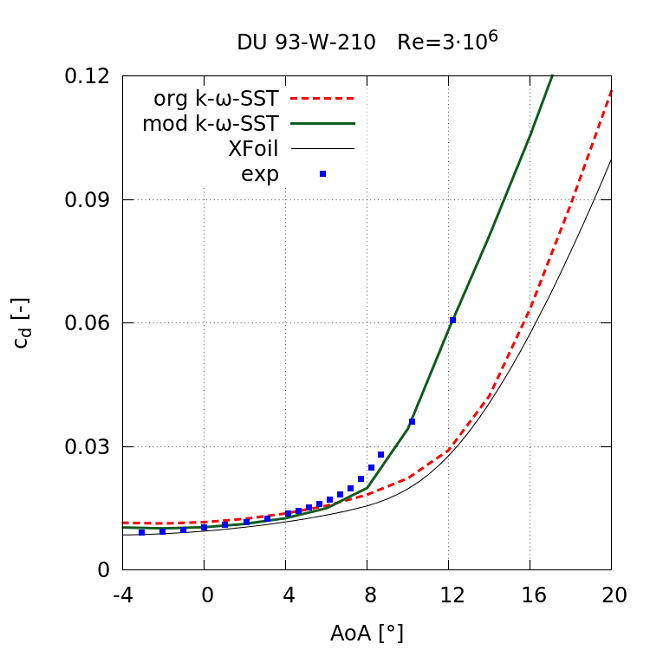
Unsteady eddy-resolving simulation methods can be used for airfoils or complete turbines in order to investigate flow behavior in detail. Furthermore, they can also be used for complex geometries, e.g. thick flatback airfoils or rotor-tower-interaction, when simpler methods may fail. The methods originate from a so-called hybrid approach; common methods include DES (Detached-Eddy Simulation), DDES (Delayed Detached-Eddy Simulation), and IDDES (Improved Delayed Detached-Eddy Simulation).
Special airfoil configurations or add-ons can be simulated as well. Nearly everything is possible, e.g. slats or flaps, vortex generators (VG), and even the aerodynamic effect of leading edge erosion can be computed.
Airfoils can be optimized for their individual purpose. Depending on the radial position along the turbine’s blade, it is possible to achieve a higher lift, lower drag, or higher lift-to-drag ratio. Typically, Fraunhofer IWES uses the adjoint approach. It is independent of the number of design parameters, and thus each airfoil point can be an individual parameter, leading to the highest possible degree of freedom in airfoil design.
